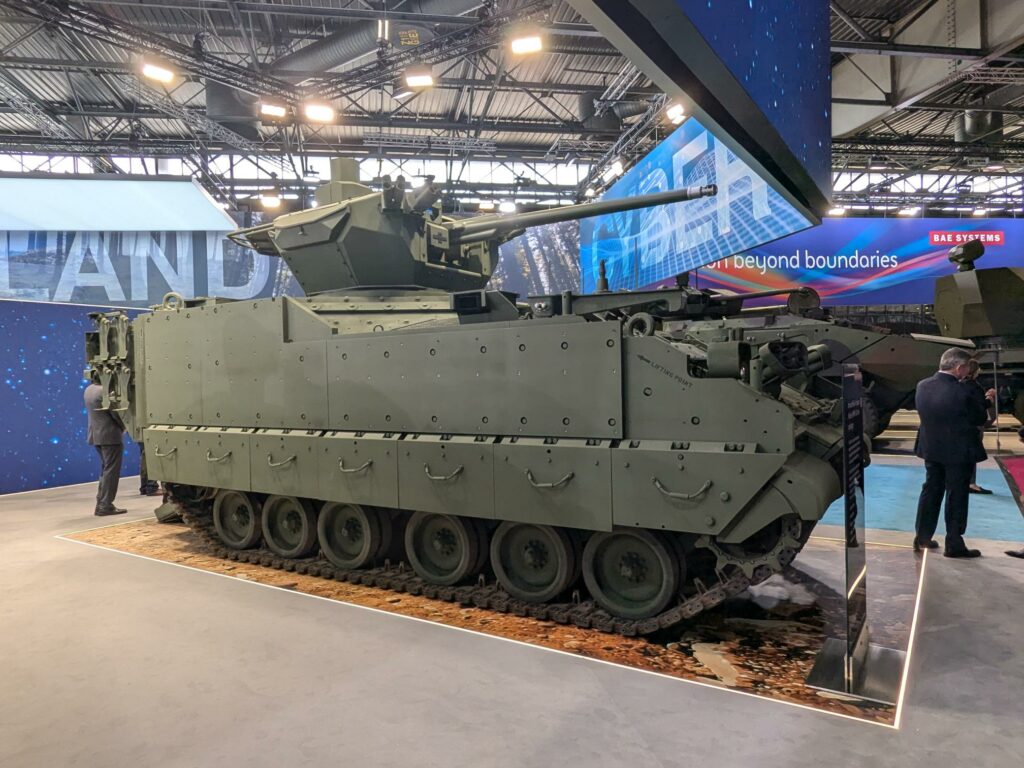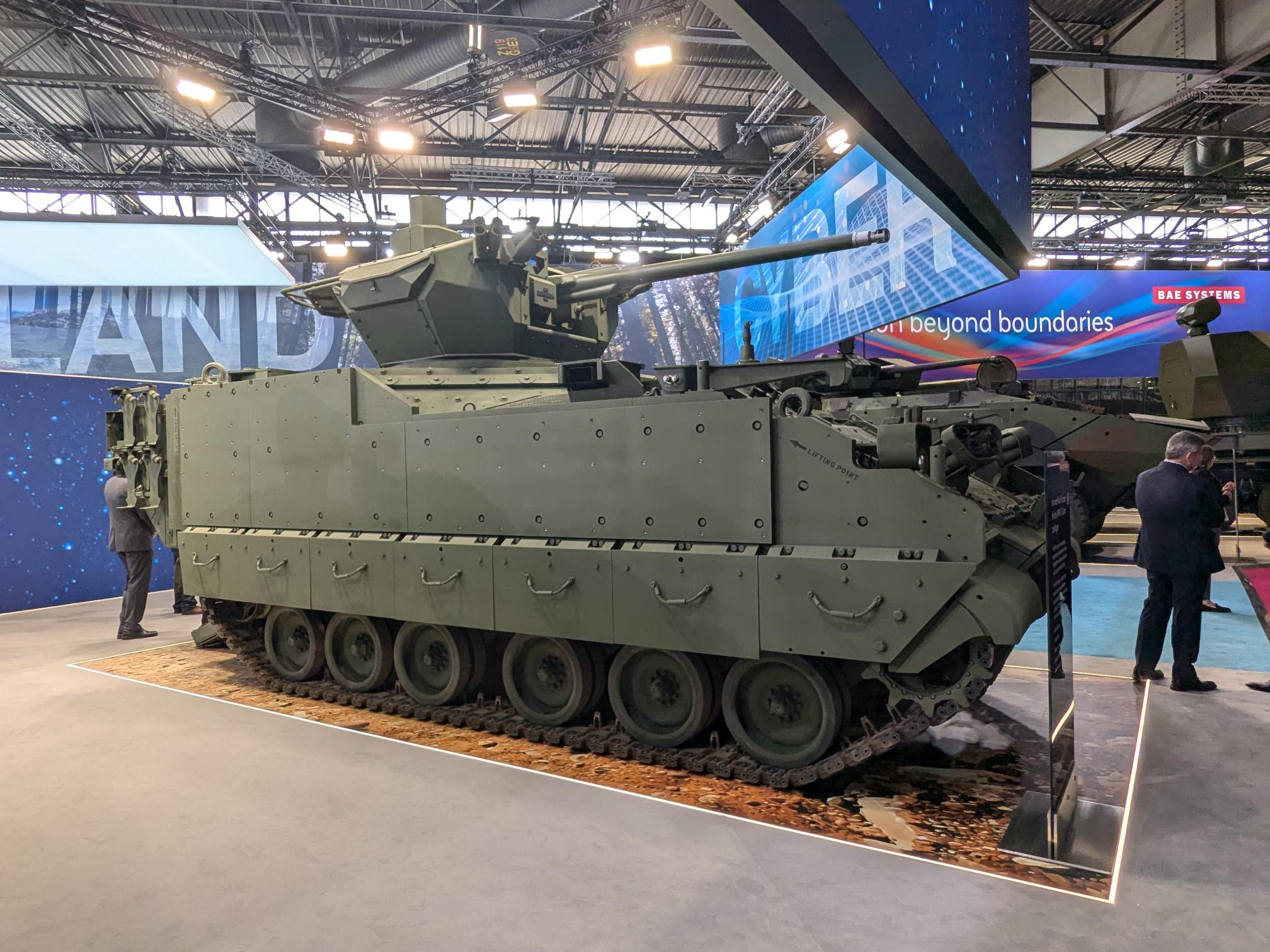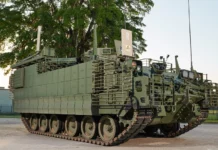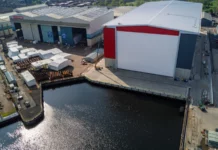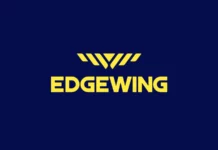BAE Systems displayed its fourth Armored Multi-Purpose (AMPV) prototype at Eurosatory 2024, held in Paris from 17-21 June. With the vehicle’s universal top plate, also known as the External Mission Equipment Package (ExMEP), allowing it to readily accept new missions payloads, the prototype at Eurosatory was shown featuring the Oshkosh Defense Medium Caliber Weapon System (MCWS): a 30 mm weapon system with planned fielding to the US Army’s Stryker Brigade Combat Teams. The vehicle’s ExMEP can adapt to more than 30 different turret systems and builds on the vehicle’s modularity, creating a seamless path for international customers to address various mission needs with the AMPV platform.
“This latest prototype demonstrates the capabilities of a universal top plate and the options it provides our allies and NATO partners for rapid integration of next-generation technology onto a proven vehicle,” Bill Sheehy, AMPV programme director for BAE Systems, was quoted as saying in a company press release. “The adaptability of the AMPV design means we are able to execute new capability integration quickly and efficiently, further proving the platform’s future-proofed design.”
BAE Systems integrated and successfully demonstrated a counter-unmanned aerial system (C-UAS) prototype in November 2023, while also integrating and delivering a 120 mm unmanned turreted mortar capability to the US Army in January 2024. The AMPV NxT prototype was debuted with a 30mm turret at AUSA Global Force in March 2024 – all three prototypes using the universal top plate.
“No matter the mission, the AMPV will continue to provide the support troops need in battle for generations to come,” Sheehy said. “We look forward to furthering conversations with our allied nations about how fast and effectively we can adapt the AMPV for any operation or role that’s needed.”
BAE Systems recently received a USD 754 million (EUR 702 million) contract from the US Army to continue manufacturing the AMPV Family of Vehicles (FoV), guaranteeing a second phase of full-rate production (FRP) volumes through to February 2027. This follows the original USD 797 million FRP contract awarded in August 2023.
The five AMPV variants currently in production – a general-purpose vehicle, a mission command variant, a mortar variant and two medical variants – provide enhanced survivability and performance over the legacy M113 armoured personnel carrier (APC) FoV.
“The modular chassis and commonality of the AMPV have proven it to be a low-risk and cost-effective solution that rapidly delivers continued combat overmatch solutions to troop, ready for the battlefield,” BAE Systems stated in a press release.
Speaking to journalists at Eurosatory on 17 June, Sheehy noted that the AMPV is currently being marketed to Romania and that, because it is designed to operate in heavy brigades alongside Abrams main battle tanks MBTs), it would also be a good fit for the Polish Land Forces, who are also receiving Abrams MBTs. He noted, however, that, as a direct replacement for the M113 APC series, the AMPV would be relevant to any army replacing those vehicles.
Sheehy also told ESD at Eurosatory that BAE Systems is working on an AMPV prototype powered by hybrid electric drive (HED), having previously experimented with HED-powered Bradley infantry fighting vehicles.
“We’ve taken those lessons learned [on the HED-powered Bradleys] and now we’re building that into an AMPV,” he said.
“Right now we are working to stay agnostic. The big piece that hasn’t come through yet is what is the what is the requirement from the client. Whether it’s the US Army or whether it’s the Polish army, the requirement will end up driving the ultimate endpiece, so we are doing the work we can now to put ourselves in a position to move rapidly when those requirements come through, so our engineers are working through a bunch of different approaches to hybrid electric power on the AMPV for any number of reasons. So that that’s where we are, but it’s all internal right now. And then, once we have that person come forward and lay out what their requirements are, then you finalise the design.”
